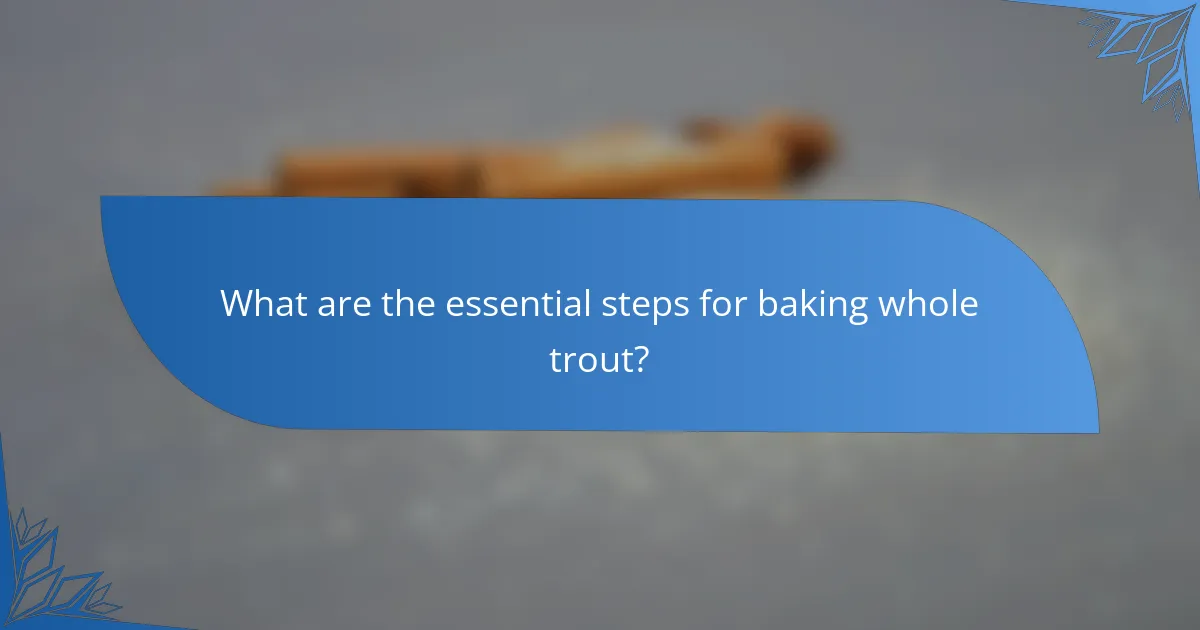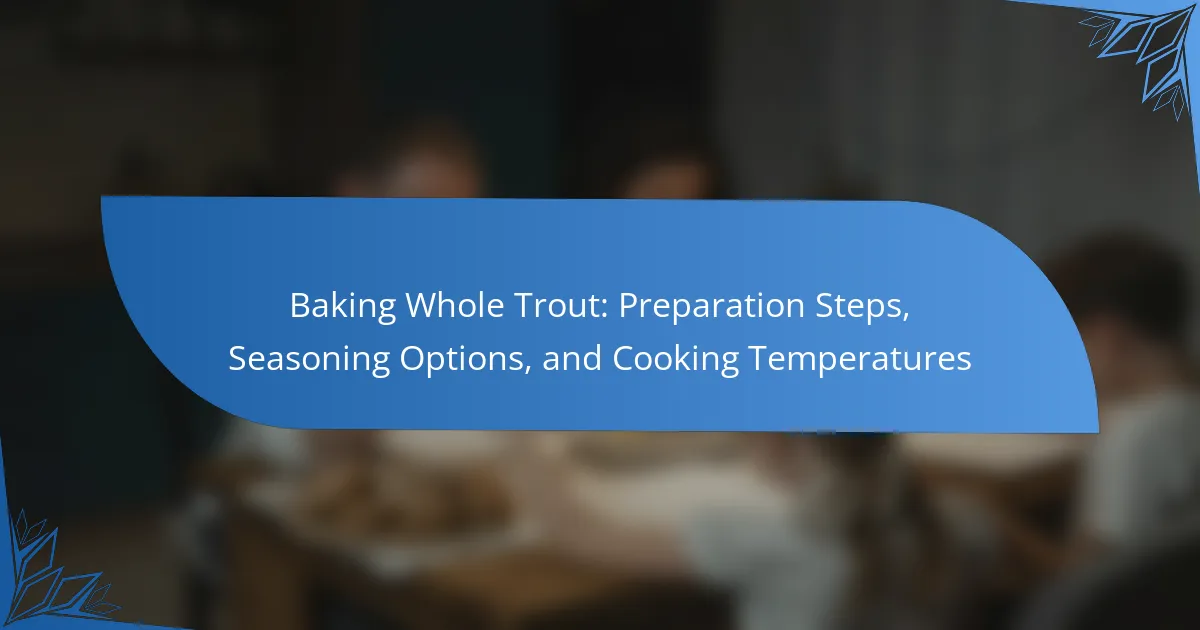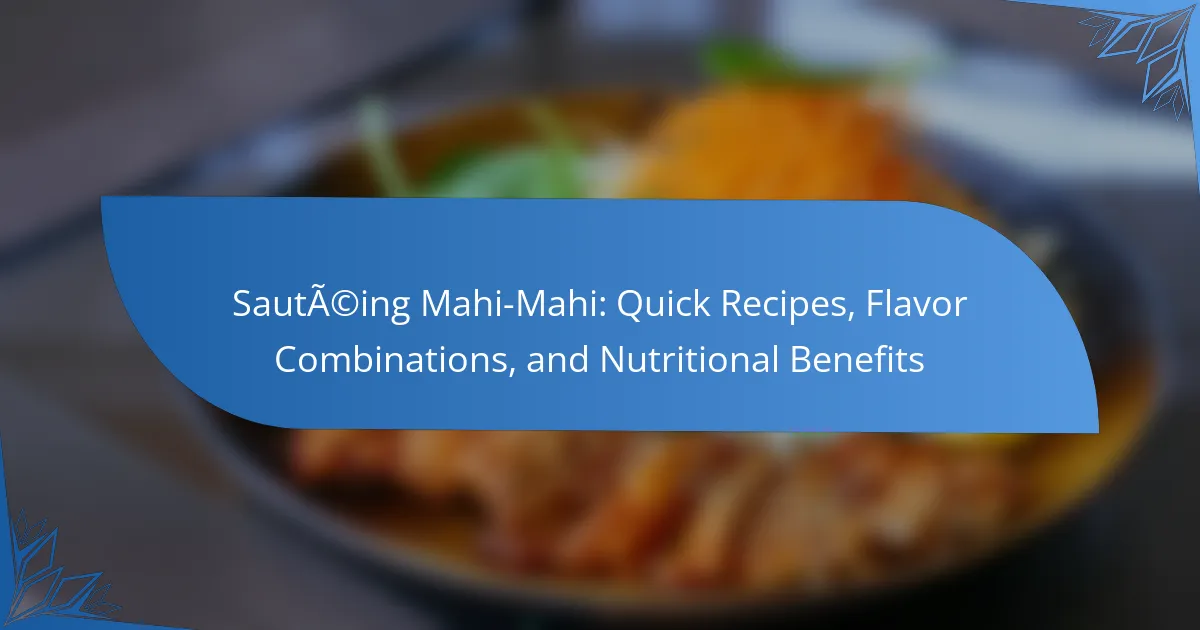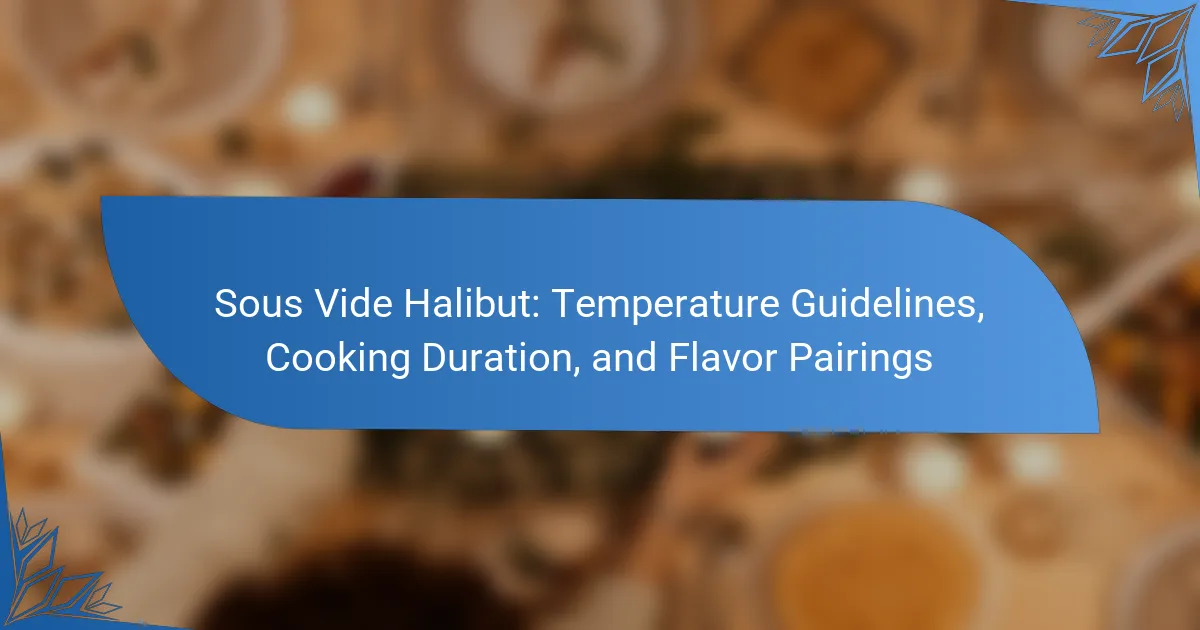
What are the essential steps for baking whole trout?
Preheat the oven to 400°F (200°C). Clean the whole trout by removing the entrails and rinsing it under cold water. Pat the fish dry with paper towels. Season the trout inside and out with salt, pepper, and your choice of herbs. Place lemon slices or aromatics inside the cavity for added flavor. Drizzle olive oil over the fish to enhance moisture and flavor. Place the trout on a baking sheet lined with parchment paper. Bake for 20-25 minutes, or until the flesh flakes easily with a fork. Check the internal temperature; it should reach 145°F (63°C) for safe consumption.
How do you prepare whole trout for baking?
To prepare whole trout for baking, first, clean the fish thoroughly. Rinse the trout under cold water to remove any slime or debris. Next, pat the fish dry with paper towels. Make a few diagonal slashes on each side of the trout for even cooking. Season the inside and outside of the fish with salt and pepper. You may also add herbs like parsley or dill inside the cavity for added flavor. Drizzle olive oil over the trout for moisture. Place the trout on a baking sheet lined with parchment paper. Bake in a preheated oven at 375°F for about 20-25 minutes, or until the flesh flakes easily with a fork.
What tools and ingredients do you need for preparation?
For baking whole trout, you need specific tools and ingredients. Essential tools include a baking dish, aluminum foil, and a fish spatula. A sharp knife for gutting and cleaning the trout is also necessary. You will need a cutting board for preparation.
Ingredients required are whole trout, olive oil, salt, and pepper. Fresh herbs like parsley or dill enhance flavor. Lemon slices add acidity and freshness. Optional ingredients include garlic and various spices for additional seasoning. Each ingredient contributes to the overall taste and presentation of the dish.
What are the key steps in cleaning and gutting the trout?
To clean and gut the trout, start by placing the fish on a clean surface. Use a sharp knife to make a shallow cut behind the gills. This cut should extend toward the belly. Next, insert the knife into the belly and cut towards the tail. Be careful not to puncture the intestines. Once the belly is open, remove the internal organs by grasping them gently and pulling them out. Rinse the cavity thoroughly under cold water. Finally, remove any remaining blood or debris with a cloth. These steps ensure the trout is clean and ready for cooking.
What are the best methods for seasoning whole trout?
The best methods for seasoning whole trout include using salt, herbs, and citrus. Salt enhances the fish’s natural flavor and helps retain moisture. Common herbs for seasoning include dill, parsley, and thyme, which complement the trout’s taste. Citrus, such as lemon or lime, adds brightness and acidity. Stuffing the cavity with herbs and citrus can infuse flavor during cooking. A mixture of olive oil, garlic, and spices can also be brushed on the skin for added flavor. These methods are widely used for their effectiveness in enhancing the taste of whole trout.
What types of herbs and spices work well with trout?
Dill, parsley, thyme, and rosemary are excellent herbs to use with trout. These herbs enhance the fish’s natural flavors. Dill offers a fresh, slightly tangy taste that complements trout well. Parsley adds a mild, earthy flavor that brightens the dish. Thyme provides a subtle, herbal note that pairs nicely with the fish. Rosemary imparts a robust, aromatic quality, enhancing the overall taste. Additionally, spices like black pepper and paprika can add warmth and depth. Black pepper adds a sharp bite, while paprika contributes a mild smokiness. Using these herbs and spices can elevate the flavor profile of baked trout significantly.
How do you create a marinade for whole trout?
To create a marinade for whole trout, combine olive oil, lemon juice, garlic, and herbs. Use a ratio of three parts oil to one part acid. Add salt and pepper to taste. Whisk the ingredients together until emulsified. Place the trout in a shallow dish or resealable bag. Pour the marinade over the trout, ensuring it is evenly coated. Marinate the trout for at least 30 minutes, but no longer than two hours. This allows the flavors to penetrate the fish without breaking down its texture.
What cooking temperatures are ideal for baking whole trout?
The ideal cooking temperature for baking whole trout is 375°F (190°C). At this temperature, the fish cooks evenly and retains moisture. Baking at 375°F allows the trout to reach a safe internal temperature of 145°F (63°C). This ensures that the fish is fully cooked and safe to eat. Cooking at this temperature typically takes about 20 to 25 minutes, depending on the size of the trout. Using a food thermometer can help verify the internal temperature accurately.
What is the recommended baking temperature for whole trout?
The recommended baking temperature for whole trout is 350°F (175°C). This temperature allows the trout to cook evenly and retain moisture. Baking at this temperature typically takes about 20-25 minutes, depending on the size of the fish. Cooking the trout until it reaches an internal temperature of 145°F (63°C) ensures it is safe to eat. This method preserves the delicate flavor and texture of the fish.
How does cooking time vary based on the size of the trout?
Cooking time for trout varies significantly based on its size. Smaller trout, around 1 pound, typically require 15 to 20 minutes of baking at 400°F. Medium-sized trout, weighing about 2 pounds, generally need 20 to 25 minutes. Larger trout, approximately 3 pounds, usually take about 25 to 30 minutes to cook thoroughly. The cooking time increases because larger fish have more mass, which requires additional time for heat [censured]. Ensuring the internal temperature reaches 145°F confirms that the trout is safely cooked. This temperature guideline is consistent across various cooking methods, including baking.
How can you ensure the best flavor and texture when baking whole trout?
To ensure the best flavor and texture when baking whole trout, start with fresh trout. Fresh fish has a firmer texture and better taste. Clean the trout thoroughly and pat it dry to remove excess moisture. Season the cavity and skin with salt, pepper, and herbs like dill or parsley for enhanced flavor. Stuff the cavity with lemon slices and garlic to add moisture and aroma during baking. Bake the trout at a temperature of 400°F for about 20 minutes, or until the flesh is opaque and flakes easily with a fork. This cooking method retains moisture and prevents overcooking. Using a meat thermometer to ensure an internal temperature of 145°F confirms doneness while maintaining optimal texture.
What common mistakes should you avoid when baking whole trout?
Common mistakes to avoid when baking whole trout include not cleaning the fish properly. Failing to remove the entrails and scales can lead to an unpleasant taste. Another mistake is not seasoning the trout adequately. Insufficient seasoning results in bland flavor. Overcooking the trout is also a frequent error. Baking it too long dries out the flesh and makes it tough. Not using a thermometer can lead to undercooking or overcooking. Aiming for an internal temperature of 145°F ensures safety and optimal texture. Additionally, neglecting to use a baking dish that retains moisture can cause the fish to dry out. Lastly, overcrowding the baking pan can lead to uneven cooking. Each of these mistakes can significantly affect the final dish’s quality.
How can you troubleshoot issues like dryness or undercooking?
To troubleshoot issues like dryness or undercooking in baked whole trout, adjust cooking time and temperature. Ensure the trout is cooked at the right temperature, typically around 375°F to 400°F. Use a food thermometer to check the internal temperature, which should reach 145°F. If the trout is dry, consider reducing cooking time or wrapping it in foil to retain moisture. For undercooking, increase the cooking time in small increments while monitoring the internal temperature. Additionally, brining the trout before baking can help prevent dryness. These methods are supported by culinary guidelines that emphasize proper cooking techniques for fish.
Baking whole trout is a culinary process that involves essential steps such as cleaning, seasoning, and cooking at specific temperatures. Key preparation techniques include removing entrails, patting the fish dry, and applying salt, pepper, and herbs for flavor enhancement. Proper cooking temperatures range from 350°F to 400°F, with an internal temperature goal of 145°F to ensure safety and optimal texture. The article also highlights common mistakes to avoid, such as inadequate seasoning and overcooking, while offering troubleshooting tips for dryness and undercooking.


